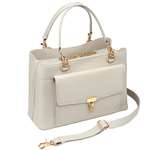
How important is knowing your backstop when shooting? Very. In fact, after following the NRA’s 3 Rules for Safe Gun Handling, knowing your backstop and what is beyond is one of the most important safety considerations. A proper backstop should stop any projectile from leaving the shooting area and striking anything beyond your intended target.
There are several factors to take into consideration when assessing your backstop:
Cartridge ballistics and design. A lightweight bullet may be more affected by wind and thus may drift away from the intended target and hit behind it. Additionally, bullets with a lower ballistic coefficient (BC) than bullets with a higher BC may be less aerodynamic, making them less accurate (depending on external factors such as wind, temperature, and elevation).
Muzzle velocity. High muzzle velocities are selling points today in the ammo world. While a desirable quality for many gun owners, higher muzzle velocities have the potential for overpenetration—especially when hunting. Remember, whether you use a handgun in a self-defense situation or a rifle in taking a deer, you are responsible for your projectile. This is true in a personal-defense situation or if a high-dollar game animal or registered bull is behind the deer you just shot.
Missing your target. Whether caused by shooter error, gun malfunctions, optic errors or cartridge problems, the simple act of missing your target could potentially create a hazardous condition with an improper backstop.
With these factors in mind, here are three common ways to ensure that you have a proper backstop when recreational shooting, target shooting, or hunting. These include proper berms; taking advantage of height; and utilizing geographic features.

1. Berms
Berms are raised earthen mounds used to stop a bullet or other projectiles. At a minimum, there needs to be a berm behind the target area. The height and depth of the berms depends on several factors such as caliber, distance from the shooter, and surrounding buildings. Some gun ranges have three berms to ensure that rounds are kept within the target area. This would include one berm behind the target—thick enough to stop any bullet fired into it—and two side berms, one to the right of the target area and one to the left of the target area.

At some ranges, baffles are used in conjunction with berms. Baffles are raised partitions that have an open area from a particular height to the ground. The baffle is situated between the shooter and the berm. The shooter fires the projectile downrange, well under the baffle and toward the berm. Baffles are intended to help keep the bullet in the target area.
Berms are usually found in outdoor public and private gun ranges. Berms are also built and used by individuals hunting or on smaller tracts of land or where their projectile could cross the property line. In this scenario, a berm would be built on the property line or in another area behind a deer feeder or trail where game is known to range or stray. You don’t want a projectile to travel over the top of the berm.
2. Height
Height can be a shooter’s answer to a having a safe backstop when shooting. Many hunters utilize raised or elevated platforms to ensure that if their projectile misses their target or over penetrates, the bullet strikes the ground. These raised platforms can be in the form of tree stands, blinds, tripods, machans and even from the back of an elephant when tiger hunting! (Just kidding, no one does that anymore).

However, it is very important that the raised or elevated platform used is well-built, sturdy, and designed to keep someone from falling to the ground. When hunting from a tree stand, always use a safety harness to avoid falling.
It’s also extremely important to remember that when hunting from an elevated or raised platform, there is the possibility of a ricochet. To minimize this, don’t shoot toward flat water, such as a stock tank, or downward in areas that are very rocky.

3. Geographic Features
Geographic features provide shooters with a safe backstop. Hills, slopes and mountains form a “natural” berm for shooting. For example, in the Texas Hill Country, most hunters use blinds elevated from a few feet tall to some that tower above the brush. These geographic features provide excellent backstops for hunting, recreational shooting or target shooting.
Still, there are several circumstances when utilizing geographic features as backstops can become hazardous. When hunting in hilly or mountainous terrain, if the shooter is on the top or rise of the feature, a projectile could strike an unintended target at the bottom or across the span. Thick forest can present other hazards. Bullets can do unpredictable things when they pass through and bounce off objects such as trees.
Safe backstops are always a very important concern when hunting. Depending on the caliber and type of firearm, a fired projectile can travel between 1.5 to 6 miles.
Lastly, it is important to remember that when you squeeze the trigger, you cannot call that bullet back. Take a pause—especially when hunting—before every shot to verify your backstop is safe before your shot.














































